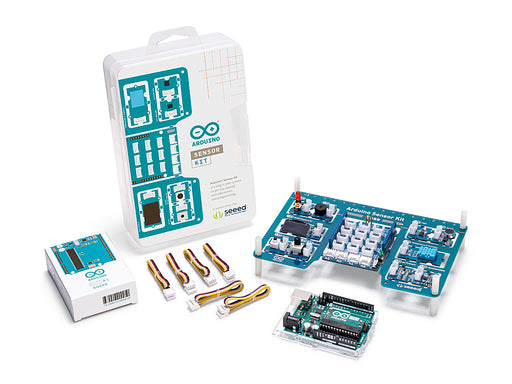
Overview
This is a multifunctional sensor that gives you temperature and relative humidity information at the same time.
It utilizes a TH02 sensor that can meet measurement needs of general purposes. It provides reliable readings when environment humidity condition inbetween 0-80% RH, and temperature condition inbetween 0-70°C, covering needs in most home and daily applications that don't contain extreme conditions.
Features:
- Wide operating voltage range:(3.3V ~ 5V)
- Low Power Consumption:350 µA during RH conversion
- 0 to 100% RH operating range
- Measuring Range: Humidity: 0% - 80% RH Temperature: 0 ~ 70 °C
- Accuracy: Humidity: ±4.5% RH
- Temperature: ±0.5°C
- I2C host interface
- Excellent long term stability
Tech specs
|
Items |
Min |
|
PCB Size |
2.0cm*4.0cm |
|
Interface |
2.0mm pitch pin header |
|
IO Structure |
SIG,VCC,GND,NC |
|
ROHS |
YES |
Electronic Characteristics
|
Items |
Conditions |
Min |
Norm |
Max |
Unit |
|
VCC |
- |
3.3 |
- |
5 |
Volts |
|
Measuring Current Supply |
- |
1.3 |
- |
2.1 |
mA |
|
Average Current Supply |
- |
0.5 |
- |
1.1 |
mA |
|
Measuring Range |
Humidity |
20% |
- |
90% |
RH |
|
Temperature |
0 |
- |
50 |
°C |
|
|
Accuracy |
Humidity |
- |
- |
±5% |
RH |
|
Temperature |
±2 |
°C |
|||
|
Sensitivity |
Humidity |
- |
1% |
RH |
|
|
Temperature |
1 |
°C |
|||
|
Repeatability |
Humidity |
±1% |
RH |
||
|
Temperature |
±1 |
°C |
|||
|
Long-term Stability |
±1% |
RH/year |
|||
|
Signal Collecting Period |
2 |
S |
Get Inspired

As robotics advance, the future could certainly involve humans and automated elements working together as a team. The question then becomes, how do you design such an interaction? A team of researchers from Purdue University attempt to provide a solution with their GhostAR system. The setup records human movements for playback later in augmented reality, while a robotic partner is programmed to work around a “ghost” avatar. This enables a user to plan out how to collaborate with the robot and work out kinks before actually performing a task. GhostAR's hardware includes an Oculus Rift headset and IR LED tracking, along with actual robots used in development. Simulation hardware consists of a six-axis Tinkerkit Braccio robot, as well as an Arduino-controlled omni-wheel base that can mount either a robot an arm or a camera as needed. More information on the project can be found in the team's research paper. With GhostX, whatever plan a user makes with the ghost form of the robot while wearing an augmented reality head mount is communicated to the real robot through a cloud connection – allowing both the user and robot to know what the other is doing as they perform a task.The system also allows the user plan a task directly in time and space and without any programming knowledge.First, the user acts out the human part of the task to be completed with a robot. The system then captures the human’s behavior and displays it to the user as an avatar ghost, representing the user’s presence in time and space.Using the human ghost as a time-space reference, the user programs the robot via its own ghost to match up with the human’s role. The user and robot then perform the task as their ghosts did.








